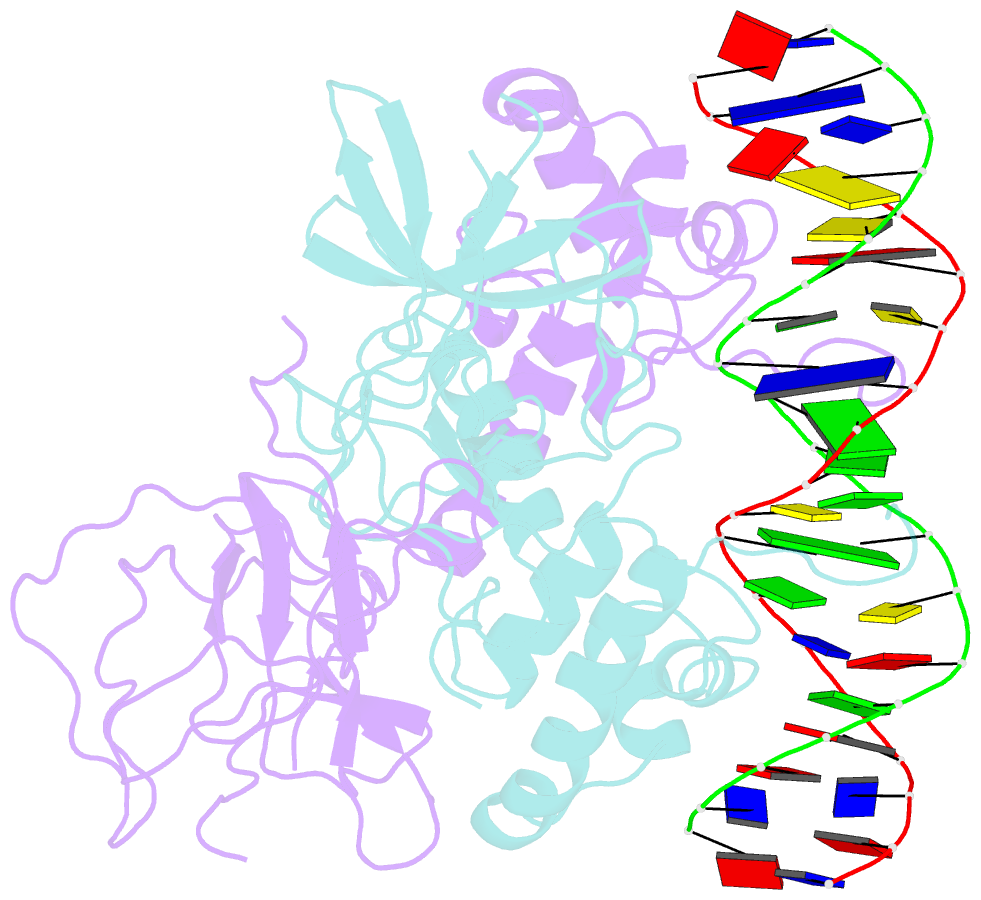Summary information and primary citation
- PDB-id
- 3bdn; SNAP-derived features in text and JSON formats;
DNAproDB
- Class
- transcription-DNA
- Method
- X-ray (3.909 Å)
- Summary
- Crystal structure of the lambda repressor
- Reference
- Stayrook SE, Jaru-Ampornpan P, Ni J, Hochschild A, Lewis M (2008): "Crystal structure of the lambda repressor and a model for pairwise cooperative operator binding." Nature, 452, 1022-1025. doi: 10.1038/nature06831.
- Abstract
- Bacteriophage lambda has for many years been a model system for understanding mechanisms of gene regulation. A 'genetic switch' enables the phage to transition from lysogenic growth to lytic development when triggered by specific environmental conditions. The key component of the switch is the cI repressor, which binds to two sets of three operator sites on the lambda chromosome that are separated by about 2,400 base pairs (bp). A hallmark of the lambda system is the pairwise cooperativity of repressor binding. In the absence of detailed structural information, it has been difficult to understand fully how repressor molecules establish the cooperativity complex. Here we present the X-ray crystal structure of the intact lambda cI repressor dimer bound to a DNA operator site. The structure of the repressor, determined by multiple isomorphous replacement methods, reveals an unusual overall architecture that allows it to adopt a conformation that appears to facilitate pairwise cooperative binding to adjacent operator sites.





